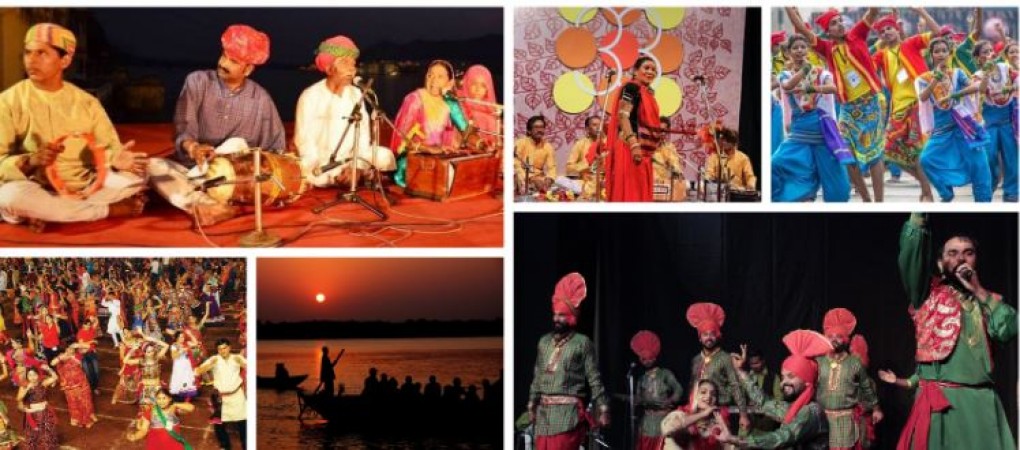
Indian folk music, deeply rooted in the country's diverse cultural fabric, reflects the beauty and vibrancy of its people and their traditions. With a rich history spanning thousands of years, Indian folk music has evolved into a tapestry of melodies, rhythms, and narratives that showcase the unique heritage of each region. From the snow-capped mountains of the Himalayas to the sun-kissed shores of the Indian Ocean, folk music resonates with the soul of the nation.origin, celebration
Also Read: Spain's Enchanting Folk Art: A Mosaic of Cultural Heritage
The origins of Indian folk music can be traced back to ancient times, where it found expression in tribal rituals, agricultural celebrations, and religious ceremonies. These melodies were handed down through generations orally, and each region developed its distinct musical style. Over the centuries, various cultural influences, including those of Persian, Arab, and Central Asian origins, shaped the music's evolution, enriching its complexity and diversity.
Indian folk music has always held a significant place in society. It serves as a medium for storytelling, conveying historical events, legends, and moral lessons. Through its poetic verses, folk music provides a unique insight into the lives of ordinary people, their struggles, and their joys. Moreover, it acts as a unifying force, fostering a sense of community and shared identity among diverse populations.
Influential Genres of Indian Folk Music:
Baul: Originating in Bengal, the Baul tradition emphasizes simplicity and spirituality. It combines elements of mysticism, philosophy, and love to create soul-stirring compositions performed with traditional instruments like ektara and dotara.
Also Read: The Mystery of the Mary Celeste: Abandoned Ship in the Atlantic
Bihu: Celebrated in Assam, Bihu music accompanies the agricultural festivals of Bohag Bihu, Magh Bihu, and Kati Bihu. Lively dance and rhythmic tunes characterize this genre, reflecting the joy of farmers during the harvesting seasons.
Rajasthani Folk Music: Rajasthan boasts a rich tapestry of musical traditions, including the lively Ghoomar dance music, the soulful Manganiyar devotional songs, and the epic ballads of the Bhopa and Bhopi.
Also Read: Cultural Heritage in Motion: The Stories and Traditions of Celebrations
Lavani: Hailing from Maharashtra, Lavani is a captivating form of music and dance that narrates stories of love and social issues. The energetic performances accompanied by dholki and lezim make it a popular genre in Indian cinema as well.
Qawwali: Originating in Sufi shrines, Qawwali is a devotional genre that transcends religious boundaries. The poetic verses, backed by mesmerizing harmonium and tabla, evoke spiritual ecstasy and unity among listeners.
Bhangra: Vibrant and lively, Bhangra emerged from Punjab and found immense popularity worldwide. The rhythmic beats of the dhol, combined with energetic dance moves, make it an irresistible genre for celebrations and festivals.
Also Read: The Dancing Plague of 1518: When Hundreds of People Couldn't Stop Dancing
Indian folk music is an invaluable treasure that encapsulates the essence of the nation's heritage. It is not just music; it is the heartbeat of a diverse and culturally rich society. Preserving and cherishing this heritage is essential to maintain the identity and soul of India. As we move towards a more interconnected world, let us remember the timeless melodies of Indian folk music that bind us to our roots and unite us in the celebration of life's joys and challenges.
Also Read: Folk Dance of Rajasthan: Cultural Heritage